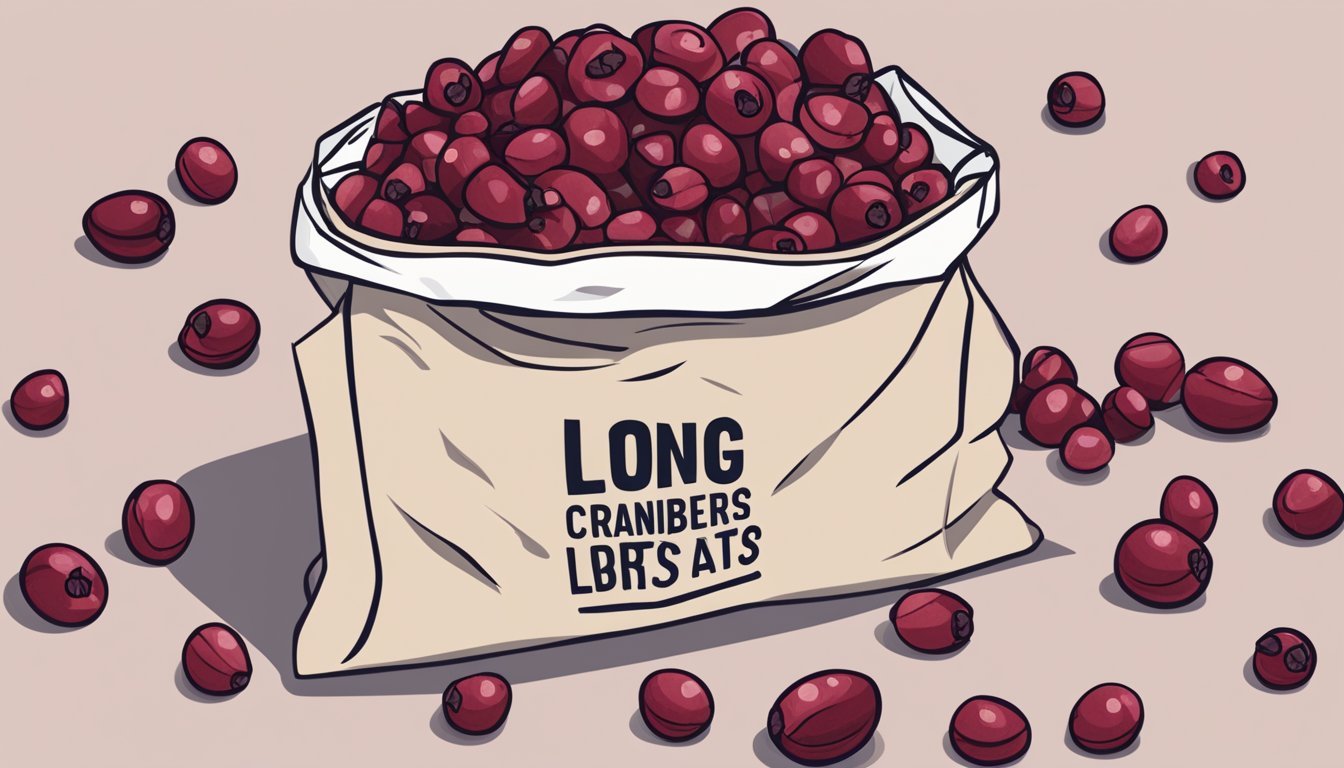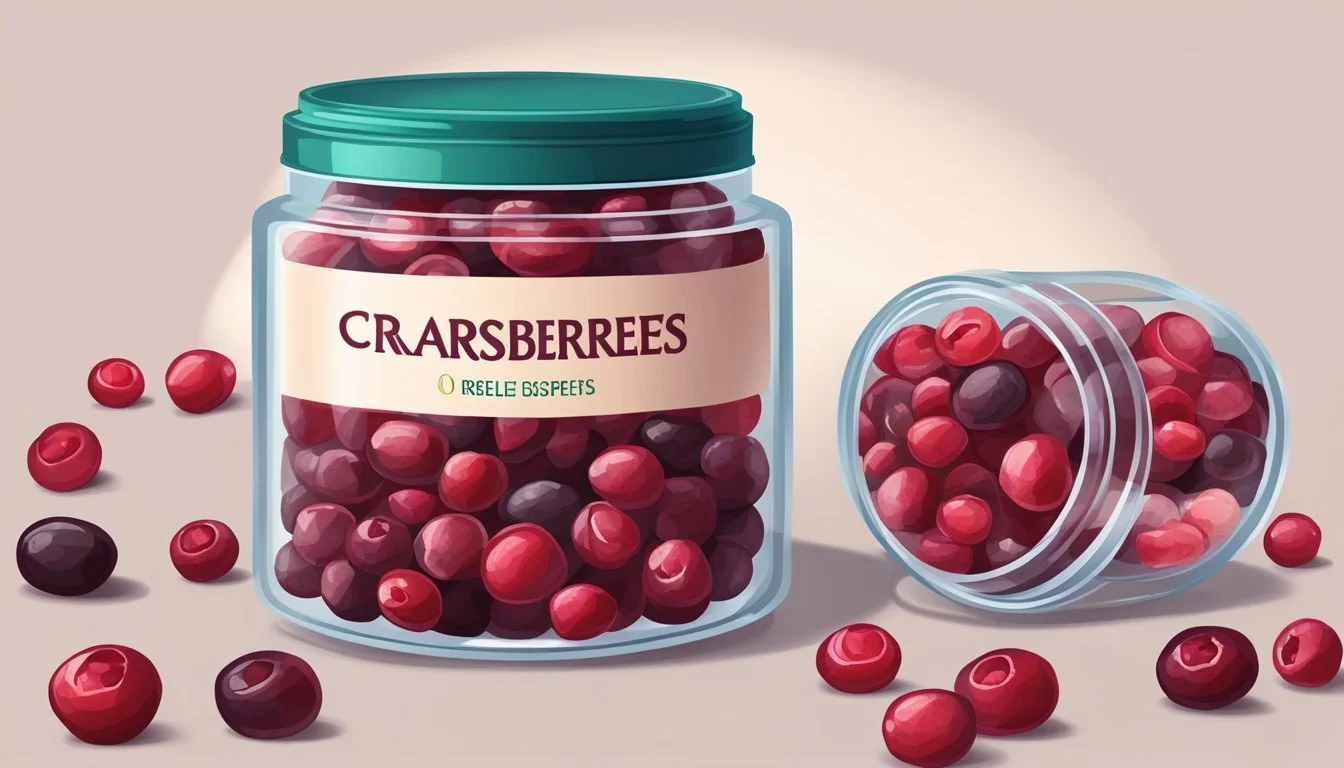How Long Do Dried Cranberries Last?
Shelf Life and Storage Tips
Dried cranberries (how long do dried cranberries last?) are a popular snack known for their sweet-tart flavor and health benefits. They are often marketed as a convenient, non-perishable treat, implying that they have a long shelf life. The longevity of dried cranberries hinges on their storage conditions. When kept in a cool, dry place, such as a pantry, they can retain their peak quality for up to 12 months. This shelf life can extend considerably when the dried cranberries are properly sealed and stored away from heat and light sources that can degrade their quality.
Once a package of dried cranberries is opened, the shelf life may decrease, as they are exposed to air and potential contaminants. To maximize their freshness after opening, it is advisable to store them in an airtight container. If refrigerated under these conditions, they can last for 1 to 2 years. While the dried cranberries may remain safe to consume beyond these time frames, their flavor and texture could change, making them less palatable.
For those who wish to extend the longevity of their dried cranberries even further, freezing is an effective option. Frozen dried cranberries can last for 2 to 5 years. It's important to note that despite their impressive shelf life, it is always crucial to check for signs of spoilage such as mold or an unusual odor before consumption, as these indicate that the dried cranberries should no longer be eaten.
Understanding Dried Cranberries
Dried cranberries, often enjoyed as a snack, offer a combination of sweet and tart flavors while providing an array of nutrients. This section explores their nutritional value, commercial processing, and health benefits.
Nutritional Value
Dried cranberries are a fiber-rich food that contributes to a balanced diet. A 1/4 cup serving typically provides:
Calories: 123
Fiber: 2 grams
Sugars: 29 grams
Vitamin C: 0.2 milligrams
They contain antioxidants which are crucial for combatting cellular damage. Although dried cranberries are sometimes sweetened which can increase the sugar content, they retain most of the vitamins found in fresh cranberries.
Commercial Processing
Commercially dried cranberries go through a methodical dehydration process. Initially, they can be flash frozen to preserve texture and nutrients before being subjected to low heat that removes most of the moisture. Throughout this process, preservatives like sulfur dioxide may be added to extend shelf life and prevent spoilage.
Health Benefits
Incorporating dried cranberries into one's diet can offer several health benefits. These benefits are due to their nutrient content, which includes fiber for improved digestion and compounds that are known to have antioxidant properties. However, it's important to consume them in moderation due to their sugar content. Some individuals also consume cranberries upon a doctor's recommendation to help with urinary tract health.
Storage Fundamentals
Proper storage is crucial for extending the shelf life of dried cranberries. They must be stored in conditions that minimize deterioration due to air, light, and humidity.
Ideal Storage Conditions
Dried cranberries should be kept in a cool, dry place to maintain their quality. The optimal temperature for storage is below 68°F (20°C), with a low humidity level to prevent spoilage. Exposure to heat and humidity can lead to a loss of flavor and nutritional value, and increase the risk of mold growth.
Refrigeration vs. Freezing
For longer-term storage, one can refrigerate or freeze dried cranberries. Refrigeration can extend their shelf life up to two years, while freezing can keep them almost indefinitely. Both methods are effective, but freezing will generally preserve the cranberries for a longer duration.
Packaging and Containers
Dried cranberries should be sealed in airtight containers to protect them from air and moisture. Glass jars or heavy-duty plastic bags are suitable choices for storage. Once opened, the cranberries should be transferred from the original package to an airtightly sealed container to prevent exposure to air and light, which can accelerate their degradation.
Shelf Life and Freshness
In the realm of dried fruits, cranberries offer a robust shelf life and freshness duration when storage conditions are optimal. Such longevity allows for extended enjoyment without significant loss of quality.
Shelf Life Expectancy
Dried cranberries typically possess a shelf life of 6 to 12 months when kept at room temperature. The indicated expiration date on packaging often reflects a 'best by' date rather than a hard stop on consumption suitability. If stored in a refrigerator, dried cranberries can extend their freshness for 1 to 2 years. For long-term preservation, freezing them can further prolong their shelf life to 2-5 years.
Factors Affecting Freshness
Two primary factors influence the longevity and freshness of dried cranberries:
Moisture: Storing them in an airtight container is crucial to keep moisture out. Excess moisture can lead to mold growth and spoilage.
Heat: Exposure to heat can degrade the quality of dried cranberries. A cool, dry environment is ideal to maintain their condition for as long as possible.
By understanding the expiration date on the label as a guide to peak quality rather than an absolute, and carefully managing storage conditions, consumers can optimize both the shelf life and freshness of dried cranberries.
Signs of Deterioration
To ensure the safety and quality of dried cranberries, it is essential to recognize the signs of deterioration. These include changes in appearance, smell, and taste, as well as the presence of mold.
Visual and Texture Changes
Color: Fresh dried cranberries have a vibrant, dark red hue. When they begin to spoil, the color may fade or become darker.
Texture: Quality dried cranberries are slightly chewy. If they become mushy or excessively tough, this indicates spoilage.
Odor and Flavor Degradation
Flavor: Loss of flavor or the emergence of a rancid taste are clear indicators that dried cranberries have gone bad.
Odor: A sour or off smell is a warning signal of spoilage.
Mold and Spoilage
Mold: Any visible mold growth means the cranberries are unsafe to eat.
Spoilage: If you notice any signs of mildew or other spoilage, discard the cranberries immediately.
Usage and Preparation
Dried cranberries offer a versatile and convenient option for enhancing a variety of dishes, from sweet to savory. Their longevity in the pantry allows for spontaneous culinary creativity without concern for rapid spoilage.
Incorporating into Recipes
For those looking to consume dried cranberries in cooking and baking, they serve as a simple way to add a touch of sweetness and tartness. They can be easily incorporated into recipes whether as a main ingredient or a flavorful accent. Chefs often recommend:
Hydrating dried cranberries in hot water or juice for a few minutes before adding to baked goods like muffins or bread to restore some of the fruits’ natural juiciness.
Tossing them directly into salads for a pop of color and a sweet-tart flavor that complements greens and vinaigrettes.
Creative Culinary Ideas
For more creative culinary ideas, dried cranberries can be:
Sprinkled onto a trail mix for a natural sweetness and chewy texture.
Added to charcuterie (What wine goes well with charcuterie?) boards for a fruity counterpoint to rich cheeses and cured meats (What wine goes well with cured meats?).
Used to make a robust cranberry sauce that can be tailored to individual sweetness preferences by adjusting the added sugars.
Incorporated into a variety of snack options, such as granola bars or energy balls, where they not only add flavor but also nutritional value.
Safety and Precautions
When storing dried cranberries, it's crucial to prevent contamination and understand how to handle them if they're past the best-by date to ensure food safety.
Prevention of Contamination
Storage Conditions: The longevity of dried cranberries hinges on storage in a cool, dry place, away from direct sunlight and heat. Exposure to these elements can degrade the fruit, leading to spoilage.
Airtight Containers: To prevent exposure to air and moisture, which can lead to deterioration, it’s recommended to use airtight containers or resealable plastic bags.
Refrigerate: For extended storage, placing dried cranberries in the refrigerator may help to preserve their quality.
Protect from Pests: Ensure cranberries are stored in a secure location where pests cannot access them as insects and rodents are attracted to dried fruits.
Handling Expired Dried Cranberries
Even though dried cranberries can be safe to consume after the expiration date, their quality may not be guaranteed.
Analyze the cranberries for any signs of spoilage such as darkening color, loss of flavor, or a tough, chewy texture.
Should the dried cranberries exhibit mold or an unusual odor, they must be discarded immediately.
Cranberries' appearance and texture are indicative of their quality. Diligent inspection and adherence to proper storage methods maximize safety and extend shelf life.







